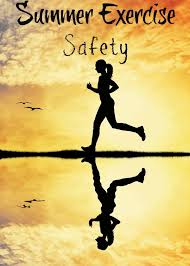Racinais S, Alonso JM, Coutts AJ, Flouris AD, Girard O, González-Alonso J, Hausswirth C, Jay O, Lee JK, Mitchell N, Nassis GP, Nybo L, Pluim BM, Roelands B, Sawka MN, Wingo J, Périard JD.
Exercising in the heat induces thermoregulatory and other physiological strain that can lead to impairments in endurance exercise capacity. The purpose of this consensus statement is to provide up-to-date recommendations to optimise performance during sporting activities undertaken in hotambient conditions. The most important intervention one can adopt to reduce physiological strain and optimise performance is to heat acclimatise.Heat acclimatisation should comprise repeated exercise-heat exposures over 1-2 weeks. In addition, athletes should initiate competition and trainingin a euhydrated state and minimise dehydration during exercise. Following the development of commercial cooling systems (eg, cooling-vest), athletes can implement cooling strategies to facilitate heat loss or increase heat storage capacity before training or competing in the heat. Moreover, event organisers should plan for large shaded areas, along with cooling and rehydration facilities, and schedule events in accordance with minimising the health risks of athletes, especially in mass participation events and during the first hot days of the year. Following the recent examples of the 2008 Olympics and the 2014 FIFA World Cup, sport governing bodies should consider allowing additional (or longer) recovery periods between and during events, for hydration and body cooling opportunities, when competitions are held in the heat.
Article in PDF (for private use only)



